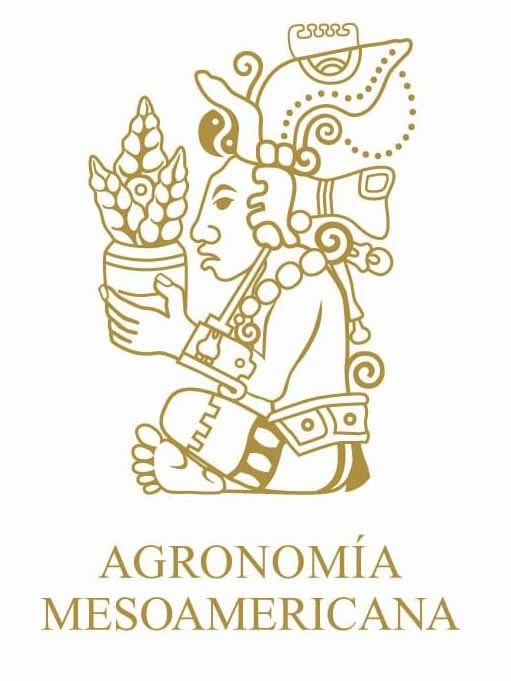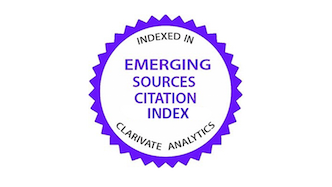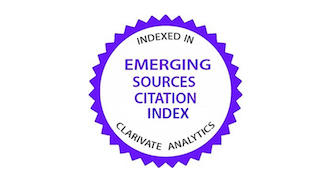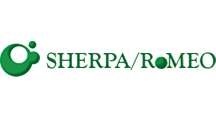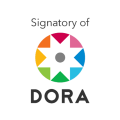Assessment yield and water productivity in soybean (Glycine max) with Aquacrop
DOI:
https://doi.org/10.15517/gpmbn475Keywords:
biomass, canopy cover, hydraulic conductivity, simulation, sensitivity, consumptive use, climate variabilityAbstract
Introduction. Simulation models are a tool to study the behavior of crops under different climatic and water conditions and agronomic management practices. Objective. To evaluate the AquaCrop model for yield and water productivity in soybean var. CIGRAS-06. Materials and methods. The study was carried out at the Estación Experimental Agrícola Fabio Baudrit Moreno of the University of Costa Rica, in Alajuela, Costa Rica from June 6th to October 23rd 2018. The AquaCrop v 7.1 model was used to simulate the development of soybean cultivation. Simulated data of plant canopy cover, biomass production and yield were compared against experimental data from a plot of soybean variety CIGRAS-06. Soil parameters measured in the field and generated using pedotransfer equations were used. Results. The predictions of yield, total biomass, and coverage were good (similarity values (d) ≥ 0.97), but the predictions of leaf coverage during the beginning of the crop cycle are should be improvement. Differences observed in the two types of soil parameters used, did not significantly affect the final simulation. Conclusions. Overall, modeling with AquaCrop successfully simulated soybean yield, biomass, and leaf coverage. The simulation of water productivity was higher than other values reported in the literature.
References
Boligon Minuzzi, R., do Amaral Frederico, C., & Freira de Silva, T. G. (2017). Estimation of soybean agronomic performance in climatic scenarios for the Southern Brazil. Revista Ceres, 64(6), 567-573. https://doi.org/10.1590/0034-737X201764060002
Chinchilla Hidalgo, K. (2023). Validación del modelo AquaCrop para estimar el rendimiento de dos variedades comerciales de frijol común (Phaseolus vulgaris L.) bajo riego deficitario controlado. [Tesis de Licenciatura, Universidad de Costa Rica]. Repositorio SIBDI de la Universidad de Costa Rica. https://repositorio.sibdi.ucr.ac.cr/handle/123456789/22237
Cordero, J. (2023, febrero 20). Agricultores retoman el cultivo de soya en Guanacaste con semilla UCR. Universidad de Costa Rica. https://www.ucr.ac.cr/noticias/2023/2/20/agricultores-retoman-el-cultivo-de-soya-en-guanacaste-con-semilla-ucr.html
Day, P. R. (1965). Particle fractionation and particle-size analysis. In C. A. Black, D. D. Evans, D. D. Ensminger, J. L. White, & F. E. Clark (Eds). Methods of soil analysis (pp. 545–567). American Society of Agronomy. https://doi.org/https://doi.org/10.2134/agronmonogr9.1.c43
dos Santos Farias, D. B., Neiva Rodrigues, L., & AlvesSouza, S. (2024). AquaCrop model assessment for simulating soybean response under water stress. Ciência Rural, 54(5), Article e20230168. https://doi.org/10.1590/0103-8478cr20230168
Fajardo, H., García, M., Raes, D., & Van Gaelen, H. (2016). Validación del modelo Aquacrop para diferentes niveles de fertilidad en el cultivo de Quinua en el Altiplano Boliviano. Revista CINTEX, 21(2), 31–52. https://revistas.pascualbravo.edu.co/index.php/cintex/article/view/16
Food and Agriculture Organization of the United Nations. (n.d.). FAOSTAT: Database on crop yields. Retrieved April 30, 2025 from https://www.fao.org/faostat/en/
Forsythe, W. (1984). Manual de laboratorio: física de suelos. Instituto Interamericano de Cooperación para la Agricultura.
Forsythe W. (1985). Manual de laboratorio: Física de suelos. (2ª ed). Instituto Interamericano de Cooperación para la Agricultura.
González-Robaina, F., López-Vargas, D., Cisneros-Zayas, E., Herrera-Puebla, J., & Cid-Lazo, G. (2019). Calibración y análisis de sensibilidad del modelo AquaCrop para frijol en suelo Ferralítico Rojo Compactado. Revista Ingeniería Agrícola, 9(4), 3-12. https://revistas.unah.edu.cu/index.php/IAgric/article/view/1166
Gutiérrez, M. V., Soto, D., & Alpízar, M. (1997). Cuarenta años de observaciones meteorológicas en la Estación Experimental Fabio Baudrit Moreno. BOLTEC 30(2), 1-14.
Imbach, P., Chou, S. C., Lyra, A., Rodrigues, D., Rodriguez, D., Latinovic, D., Siqueira, G., Silva, A., Garofolo, L., & Georgiou, S. (2018). Future climate change scenarios in central America at high spatial resolution. PLoS One, 13(4), Article e0193570. https://doi.org/10.1371/journal.pone.0193570
Intergovernmental Panel for Climate Change. (2019). Special report: Climate change and land. Chapter 2: Land–climate interactions. https://www.ipcc.ch/srccl/chapter/chapter-2/
Kreutz Rosa, S. L., Moretti de Souza, J. L., Oliveira, C. T., & Tsukahara, R. Y. (2023). Calibration and validation of the AquaCrop model to estimate soybean production in the Campos Gerais, Parana State, Brazil. Agricultural Engineering International: CIGR Journal, 25(4), 1-13. https://cigrjournal.org/index.php/Ejounral/article/view/8245
Lu, Y., Chibarabada, T. P., McCabe, M. F., De Lannoy, G. J. M., & Sheffield, J. (2021). Global sensitivity analysis of crop yield and transpiration from the FAO-AquaCrop model for dryland environments. Field Crops Research, 269, Article 108182. https://doi.org/https://doi.org/10.1016/j.fcr.2021.108182
Mata, R., Vázquez, A., Rosales, A., & Salazar, D. (2016). Mapa digital de suelos de Costa Rica (Escala, 1, 200000). Asociación Costarricense de la Ciencia del Suelo.
Ministerio de Agricultura y Ganadería. (2015). Estrategia de ganadería baja en carbono en Costa Rica. https://www.mag.go.cr/bibliotecavirtual/AV-1174.pdf
Morales-Santos, A., García-Vila, M., & Nolz, R. (2023). Assessment of the impact of irrigation management on soybean yield and water productivity in a subhumid environment. Agricultural Water Management, 284, Artícle 108356. https://doi.org/https://doi.org/10.1016/j.agwat.2023.108356
Organización para la Cooperación y el Desarrollo Económico - Organización de las Naciones Unidas para la Alimentación y la Agricultura. (2023). OCDE-FAO Perspectivas Agrícolas 2023-2032. https://doi.org/10.1787/2ad6c3ab-es
Porras-Jorge, R., Ramos-Fernández, L., Ojeda-Bustamante, W., & Ontiveros-Capurata, R. (2020). Performance assessment of the AquaCrop model to estimate rice yields under alternate wetting and drying irrigation in the coast of Peru. Scientia Agropecuaria, 11(3), 309-321. https://doi.org/10.17268/sci.agropecu.2020.03.03
Quesada-Chacón, D., Barfus, K., & Bernhofer, C. (2021). Climate change projections and extremes for Costa Rica using tailored predictors from CORDEX model output through statistical downscaling with artificial neural networks. International Journal of Climatology, 41(1), 211–232. https://doi.org/10.1002/joc.6616
Raes, D., Steduto, P., Hsiao, T. C., & Fereres, E. (2023). AquaCrop: Version 7.1 reference manual [Software Manual]. Food and Agriculture Organization of the United Nations.
Salman, M., García-Vila, M., Fereres, E., Raes, D. & Steduto, P. (2021). The AquaCrop model – Enhancing crop water productivity. Ten years of development, dissemination and implementation 2009–2019 (FAO Water Report No. 47). Food and Agriculture Organization of the United Nations. https://doi.org/10.4060/cb7392en
Saxton, K. E., & Rawls, W. J. (2006). Soil water characteristic estimates by texture and organic matter for hydrologic solutions. Soil Science Society of America Journal, 70, 1569-1578. https://doi.org/10.2136/sssaj2005.0117
Secretaría Ejecutiva de Planificación Sectorial Agropecuaria. (2016). Plan Nacional para la Seguridad Alimentaria, Nutrición y Erradicación del Hambre 2025. Plan SAN-CELAC Costa Rica. I Quinquenio. Organización de las Naciones Unidas para la Alimentación y la Agricultura. https://faolex.fao.org/docs/pdf/cos177242.pdf
Soil Survey Staff. (2014). Claves para la taxonomía de suelos (12ª ed.). Departamento de Agricultura de los Estados Unidos, & Servicio de Conservación de Recursos Naturales. https://www.nrcs.usda.gov/sites/default/files/2022-10/Spanish-Keys-to-Soil-Taxonomy.pdf
Steduto, P., Hsiao, T. C., Raes, D. & Fereres, E. (2009). AquaCrop—The FAO crop model to simulate yield response to water: I. Concepts and underlying principles. Agronomy Journal, 101, 426-437. https://doi.org/10.2134/agronj2008.0139s
Steduto, P., Hsiao, T. C., Fereres, E., & Raes, D. (2012). Crop yield response to water (FAO Irrigation and Drainage Paper No. 66). Food and Agriculture Organization of the United Nations. https://www.fao.org/4/i2800e/i2800e00.htm
Terán-Chaves, C. A., García-Prats, A., & Polo-Murcia, S. M. (2022). Calibration and validation of the FAO AquaCrop water productivity model for perennial ryegrass (Lolium perenne L.). Water, 14(23), Article 3933. https://doi.org/10.3390/w14233933
Tobía, C., & Villalobos, E. (2004). Producción y valor nutricional del forraje de soya en condiciones tropicales adversas. Agronomía Costarricense, 28(1), 17-25. https://doi.org/10.15517/rac.v28i1.61222
Tornés Olivera, N., Brown Manrique, O., Gómez Masjuan, Y., & Guerrero Alega, A. M. (2016). Evaluación del modelo AquaCrop en la simulación del crecimiento del cultivo del frijol. Revista Ciencias Técnicas Agropecuarias, 25(3), 23-30. https://revistas.unah.edu.cu/index.php/rcta/article/view/450
Ureña, P., Alfaro, E. M., & Soley, F. J. (2016). Propuestas metodológicas para el rellenado de datos ausentes en series de tiempo geofísicas. Guía Práctica de uso. Universidad de Costa Rica. https://www.kerwa.ucr.ac.cr/server/api/core/bitstreams/b05ba1d5-3f25-4c5a-85f3-4d93f802752e/content
Van Looy, K., Bourna, J., Herbst, M., Koestel, J., Minasny, B., Mishra, U., & Vereecken, H. (2017). Pedotransfer functions in Earth system science: Challenges and perspectives. perspectives. Reviews of Geophysics, 55, 1199-1256. https://doi.org/10.1002/2017RG000581
Villalobos, E., & Camacho, F. (1999). Avances en el mejoramiento genético de la soya en Costa Rica: II. CIGRAS-06 y CIGRAS-10, dos nuevas variedades tropicales. Agronomía Costarricense, 23(1), 61-67.
Yadav, M., Vashisht, B. B., Jalota, S. K., Jyolsna, T., Singh, S. P., Kumar, A., Kumar, A., & Singh, G. (2024). Improving water efficiencies in rural agriculture for sustainability of water resources: A Review. Water Resources Management, 38(10), 3505–3526. https://doi.org/10.1007/s11269-024-03836-6
Downloads
Published
License
Copyright (c) 2025 Dania Zúñiga-Herrera, Néstor Felipe Chaves-Barrantes, Marco Vinicio Gutiérrez-Soto, Mayela Monge-Muñoz, Cristina Chinchilla-Soto4 (Author)

This work is licensed under a Creative Commons Attribution-NonCommercial-NoDerivatives 4.0 International License.
1. Proposed policy for open access journals
Authors who publish in this journal accept the following conditions:
a. Authors retain the copyright and assign to the journal the right to the first publication, with the work registered under the attribution, non-commercial and no-derivative license from Creative Commons, which allows third parties to use what has been published as long as they mention the authorship of the work and upon first publication in this journal, the work may not be used for commercial purposes and the publications may not be used to remix, transform or create another work.
b. Authors may enter into additional independent contractual arrangements for the non-exclusive distribution of the version of the article published in this journal (e.g., including it in an institutional repository or publishing it in a book) provided that they clearly indicate that the work was first published in this journal.
c. Authors are permitted and encouraged to publish their work on the Internet (e.g. on institutional or personal pages) before and during the review and publication process, as it may lead to productive exchanges and faster and wider dissemination of published work (see The Effect of Open Access).

